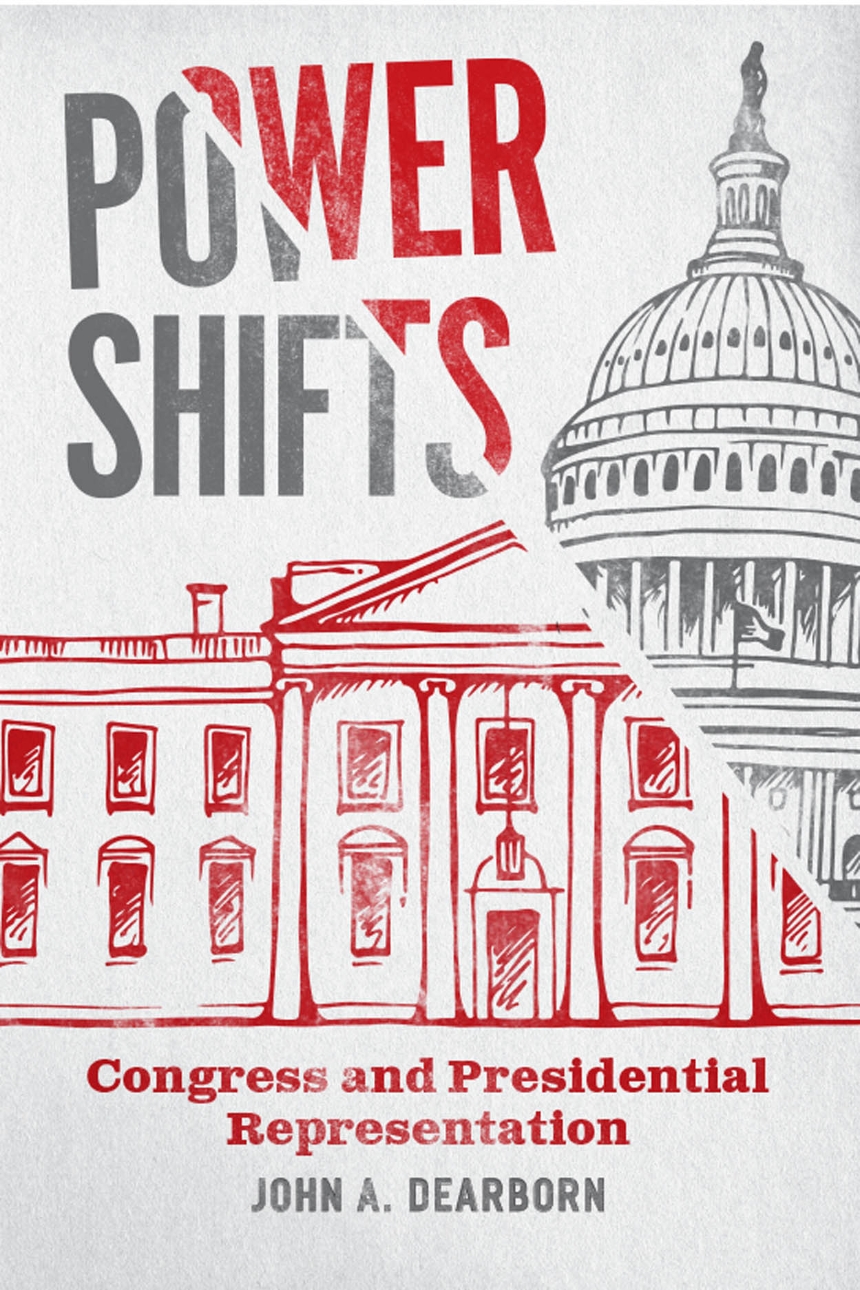Power Shifts
Congress and Presidential Representation
That the president uniquely represents the national interest is a political truism, yet this idea has been transformational, shaping the efforts of Congress to remake the presidency and testing the adaptability of American constitutional government.
The emergence of the modern presidency in the first half of the twentieth century transformed the American government. But surprisingly, presidents were not the primary driving force of this change—Congress was. Through a series of statutes, lawmakers endorsed presidential leadership in the legislative process and augmented the chief executive’s organizational capacities.
But why did Congress grant presidents this power? In Power Shifts, John A. Dearborn shows that legislators acted on the idea that the president was the best representative of the national interest. Congress subordinated its own claims to stand as the nation’s primary representative institution and designed reforms that assumed the president was the superior steward of all the people. In the process, Congress recast the nation’s chief executive as its chief representative.
As Dearborn demonstrates, the full extent to which Congress’s reforms rested on the idea of presidential representation was revealed when that notion’s validity was thrown into doubt. In the 1970s, Congress sought to restore its place in a rebalanced system, but legislators also found that their earlier success at institutional reinvention constrained their efforts to reclaim authority. Chronicling the evolving relationship between the presidency and Congress across a range of policy areas, Power Shifts exposes a fundamental dilemma in an otherwise proud tradition of constitutional adaptation.
The emergence of the modern presidency in the first half of the twentieth century transformed the American government. But surprisingly, presidents were not the primary driving force of this change—Congress was. Through a series of statutes, lawmakers endorsed presidential leadership in the legislative process and augmented the chief executive’s organizational capacities.
But why did Congress grant presidents this power? In Power Shifts, John A. Dearborn shows that legislators acted on the idea that the president was the best representative of the national interest. Congress subordinated its own claims to stand as the nation’s primary representative institution and designed reforms that assumed the president was the superior steward of all the people. In the process, Congress recast the nation’s chief executive as its chief representative.
As Dearborn demonstrates, the full extent to which Congress’s reforms rested on the idea of presidential representation was revealed when that notion’s validity was thrown into doubt. In the 1970s, Congress sought to restore its place in a rebalanced system, but legislators also found that their earlier success at institutional reinvention constrained their efforts to reclaim authority. Chronicling the evolving relationship between the presidency and Congress across a range of policy areas, Power Shifts exposes a fundamental dilemma in an otherwise proud tradition of constitutional adaptation.
368 pages | 1 halftone, 4 tables | 6 x 9 | © 2021
Chicago Studies in American Politics
Political Science: American Government and Politics
Reviews
Table of Contents
Preface Rethinking a Political Truism
1 Introduction: Legislating Presidential Power
2 Ideas and Political Development
Part I Institutional Choice: Creating the Institutional Presidency, 1910–49[TN1]
3 Presidential Budgeting
4 Presidential Economic Policymaking
5 Presidential Reorganization Authority
6 Presidential National Security Authority
Part II Institutional Durability: Reconsidering the Institutional Presidency, 1970–84
7 Congressional Pushback against Presidential Budgeting
8 Congressional Pushback against Presidential Economic Policymaking
9 Congressional Pushback against Presidential Reorganization Authority
10 Congressional Pushback against Presidential National Security Authority
11 Conclusion: Ideas and the Politics of Adaptability
Acknowledgments
Notes
Index
1 Introduction: Legislating Presidential Power
2 Ideas and Political Development
Part I Institutional Choice: Creating the Institutional Presidency, 1910–49[TN1]
3 Presidential Budgeting
4 Presidential Economic Policymaking
5 Presidential Reorganization Authority
6 Presidential National Security Authority
Part II Institutional Durability: Reconsidering the Institutional Presidency, 1970–84
7 Congressional Pushback against Presidential Budgeting
8 Congressional Pushback against Presidential Economic Policymaking
9 Congressional Pushback against Presidential Reorganization Authority
10 Congressional Pushback against Presidential National Security Authority
11 Conclusion: Ideas and the Politics of Adaptability
Acknowledgments
Notes
Index
Awards
Presidents and Executive Politics section, American Political Science Association: Richard E. Neustadt Award
Won
